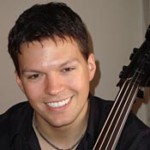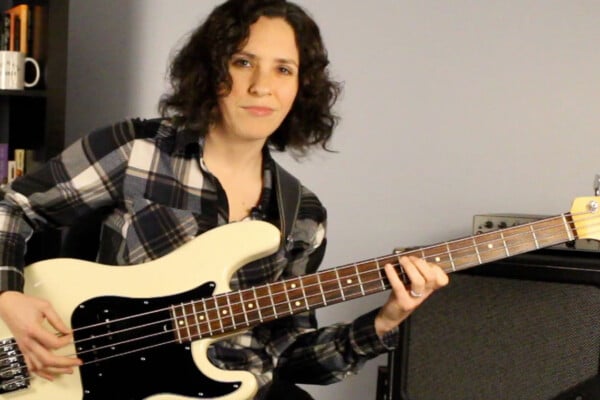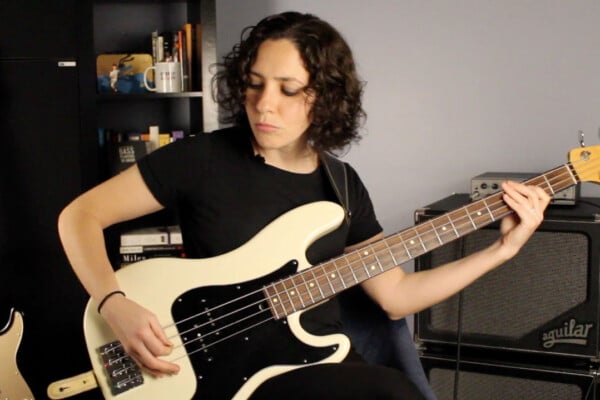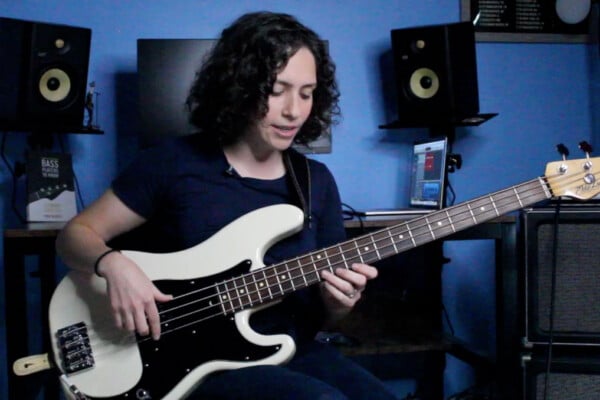Lesson: Master the Fretboard – Part 2
This series has been dedicated to learning the fretboard, the previous lesson covered the major scale. In this lesson we will cover an applying the major scale to a basic chord progression, the II-V-I.
There are a multitude of ways to think about music. For this exercise we will focus on thinking laterally and vertically. When we think laterally we will approach the notes as they move through time. A great example of this is playing a scale. Each note sounds individually in time but their sequence gives a characteristic sound. To hear this, play the Ionian mode for C major outlined in Part 1 followed by the Aeolian mode of C major (a C major scale starting on A). The notes are the same, but the sound is very different. The Ionian form has a distinct major-sound to it (for lack of a better description) while the Aeolian form has a minor-sound (it reminds me of a snake-charmer). The incredible thing is that they use exactly the same notes! Changing the sequence, how the notes align in time laterally, is what changes the sound. It is not only about the individual pitches. Let that sink in conceptually for a minute.
When we think vertically we’ll be stacking notes in a chord. Now multiple notes will resound at the same point in time. Using the above example you can play a C-major triad using the 1, 3 and 5 notes from the Ionian scale, this would be C-E-G and gives the characteristic major-sound. Compare this to playing a A-minor triad, formed from the 1, 3 and 5 from the Aeolian scale, yielding A-C-E, which gives a minor-sound.
Music is created by vertical and lateral combinations of tones. They are two sides to the same coin. Therefore, we can associate certain vertical combinations (chords) with certain lateral sequences (scales). For the II-V-I progression we associate the following chords and scales together:
C major 7 (C-E-G-B) = Cmaj7 (or C-triangle)= C Major C-Ionian Mode
D minor 7 (D-F-A-C) = D-7 = C major D-Dorian Mode
G dominant 7 (G-B-D-F) = G7 = C major G-Mixolydian Mode
As a quick refresher from Part 1:
Ionian = major scale starting and ending on 1 e.g. C D E F G A B C’ for C-major
Dorian = major scale starting and ending on 2 e.g. D E F G A B C D’ for C-major
Mixolydian = major scale starting and ending on 5 e.g. G A B C D E F G’ for C-major
In a chord chart you would see the following sequence for a II-V-I in C-major:
D-7 | G7 | Cmaj7
Now for the exercises! Remember, our goal is to make the fretboard an accessible pool of notes for any given key or chord progression. We don’t want to be restricted to thinking about only specific scale patterns or chord structures, we want to freedom to move where and how we want. This is accomplished through 1) practice 2) practice and 3) more practice. I say that because these next drills will only be as good as what you put into them.
Excercise 1:
The first exercise is to get used to hearing the chord sequence. Therefore all you have to do is play the chords! This is so your ear becomes familiar with the vertical sound of this progression. Once you know and start listening to jazz records you will hear all the time.The finger structure will be as follows:

Figure 1: Chord structure for D-7

Figure 2: Chord structure for G7

Figure 3: Chord structure for Cmaj7
Exercise 2:
Play through the scale patterns over each chord in order. First you will play D-Dorian, then G-Mixolydian, then C-Ionian. Do this ascending and descending. The goal is to get familiar with the lateral structure

Figure 4: Fretboard layout of D-Dorian Mode

Figure 5: Fretboard layout of G-Mixolydian Mode

Figure 6: Fretboard layout of C-Ionian Mode
Exercise 3:
We will work with one chord per bar playing quarter notes focusing on the chord tones. So for a D-7 | G7 | Cmaj7 we have the following chord tones available:
D-7 = D, F, A, C
G7 = G, B, D, F
Cmaj7 = C, E, G, B
Using a metronome play only the chord tones starting on the root of each chord in an ascending pattern (this is formally called an arpeggio):

Figure 7: Ascending Chord Tones
Again, this is get used to the sound of the progression laterally. Start experimenting with ascending and descending combinations to become more comfortable with the available chord tones and their locations on the fretboard.

Figure 8: Ascending/Descending Chord Tones
Exercise 4:
Once you are comfortable with playing the chord tones in sequence it is time to start linking them together. For this exercise you can start on any chord tone you want from D-7, then moving in quarter you can only move to adjacent chord tones. This means that if you start on D, you can go up to F or down to C. From there you can now move to another adjacent chord tone. When the chord switches from D-7 to G7 you again can move only to adjacent chord tones (do not restart on the root). Do this exercise through all the combinations you can think of, you’ll be amazed at how this opens up the fretboard! Here are a few examples:



Figure 9: Examples of Adjacent Tone Exercises
Exercise 5:
The final exercise is to make melodic lines using the principles from exercise 4. Vary the rhythms of the notes playing only on adjacent chord tones to make simple melodies. With consistent practice this will give tremendous results and is the first step towards improvising over changes successfully. Remember to expand this exercise to different keys. If you look in the Real Book at any jazz standards you will see II-V-I’s all over the place. Get to work and have fun!




nice!! I think the tab-dotted fretboard imgs. are upside down & backwards tho, no?
Hey Damian, the fretboard images are oriented so it’s like looking at a video of someone playing (right handed). Therefore the top line is the E-string and the first line on the right side would be the nut on the neck (the bridge would be to the left). So in figure one, the dots from top-to-bottom are 1) E-string 10th fret, 2) D-string 10th fret, 3) G-string 10th fret. This would give D-C-F, a D-7 chord by the root, minor seventh and minor 10th. I used this dot-notation because I wanted to highlight the patterns on the fretboard, next time I’ll put on fret number to avoid confusion.
Thanks for the explanation, that diagram was confusing the heck out of me.